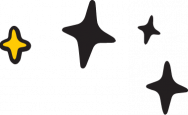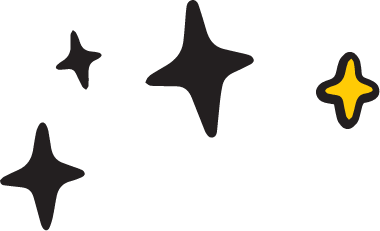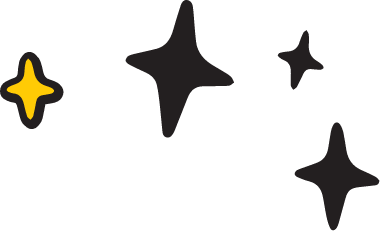We created this course because we realized that many high school students wanted to, and were ready to, learn to code but many didn’t know where to start. At our University, we’ve heard too many stories of students who tried learning coding by Googling around for lessons and watching YouTube videos and walked away from poorly designed curricula thinking that coding was too difficult and/or “wasn’t for them”. We want to introduce coding to students in a way that gets them excited about all that coding allows folks to do.
$149 plus tax per student. This tuition covers all costs.
The student is expected to have access to a computer or laptop to access and work through the online instructional materials and to email and schedule meetings with the instructional staff.
Students and parents/guardians (when applicable) will need to complete our application form. After that, an online screening module will be emailed for the student to complete, which we anticipate taking between 60-90 minutes (work at your own pace). After successful completion, you will be provided with a link to the payment page, and after paying for the course, the student is registered! Students who are younger than 18 years old when applying should plan to have their parent/guardian available to complete the forms.
If a student does not successfully complete the module, that’s ok! Please consider the program next summer!
Yes! Once you apply you will receive a link to a screening module. To enroll in the course you have to complete the screening module and pay the course fee. Instructions for how to pay or apply for need-based financial aid are located at the end of the module. Our goal is to provide need-based aid to all who desire it.
Yes, it’s completely online.
Students just need a modern internet browser (Chrome or Edge), internet connection, laptop or desktop computer, and internet. Everything (including the coding and lectures/interactive textbook) will be online.
Whatever a student used to complete their online screen module will be sufficient for the course.
The course is self-driven and asynchronous so having a drive to want to learn is important. The student is expected to finish one integrated lecture + reading + coding module each week, and that work will take 4-6 hours. How students schedule their time is up to them. Of course, starting early right when the module is released is strongly encouraged and better than waiting for the homework deadline because the staff can help the student get unstuck if/when they do get stuck (which will most likely happen as the material gets more difficult).
See here for the syllabus.
The student works at their own pace through the codex and is led step-by-step from concepts to applications via a mix of written descriptions of concepts, short video explanations, and grading challenges. We expect that the student will reach out to us via email or by scheduling a zoom call with the coaches, whenever they are unstuck or want to learn more – these as-needed conversations facilitate personalized learning in ways a video lecture just cannot.
Coding is best learned by doing, rather than watching someone else code! And asking questions as one is working on it. This course is designed to facilitate experiential learning and experimentation with the assurance that the teaching team is there for the student and available to help along every step of their learning journey.
Yes, a computer is necessary for the assignments because smaller screens will be too small to read the content and code on Pathbird.
During the application process, all students will complete an online screening module that will determine if we believe a student is ready for the course. In general, we expect students to have completed high school algebra and have knowledge of function notation (for example, what do y = f(x) = cos(x), or, z = g(x,y) = cos(x) + sin(y), mean?). It’s also important that participants also have a desire to learn and willingness to reach out for help when stuck (because most everyone gets stuck somewhere!), and 4-6 hours per week to commit to the course.
While the course can be for anyone who has the necessary fundamental math knowledge (therefore, no coding experience is necessary), if you have some coding experience, there is still much to gain from the course! While covered concepts may be familiar to some participants, students will also apply computational thinking (for things such as snapchat apps) while also gaining a better understanding of machine learning as a result of each lesson (for functions/recursions/conditionals). In general, this is an opportunity to have a chance to see the application of math concepts through the exciting world of coding!
We hope all students can leave with a “wow!” and also a “that’s all it takes to do that?” sense that makes them feel like they too can be part of the coding enabled apps we use and play with every day. Our program’s main goal is to “jumpstart” and energize students to want to take the next step by learning even more!
While the course is self-paced, not being able to participate in the course for a significant amount (consecutive days to a week) of time will create the need to catch up and consolidate the work in a limited time, which we are hoping to avoid for the students’ experiences. Our instructors are available to help students during regularly scheduled hours; however we are only able to help students complete the content of the course within the program’s date range, and want to ensure students are feeling supported and not behind to complete all the course’s content. While students are welcome to proceed with the application and course knowing they may not be available at certain times, students and families will need to assess for themselves if now is the best time to proceed given their plans or wait to possibly consider the course in the future.
Note: Students will be provided two weeks to complete the second assignment of the course due to the Fourth of July holiday.
The point of the module is just to check if applicants’ present background matches how we have designed the course. It is NOT a test to see if applicants can learn coding or not — EVERYONE can learn to code. It’s just that one needs to know some fundamental math knowledge before one can start, especially since we are doing this fully online.
So if applicants don’t have the algebra background yet, don’t worry — come back next year. We will be delighted to have you apply again!
After applying, we will email instructions and a link to an online screen module for applicants to complete. In order to be further considered for the program, applicants must complete the module.
The point of the module is just to check if applicants’ present background matches how we have designed the course. It is NOT a test to see if applicants can learn coding or not — EVERYONE can learn to code. It’s just that one needs to know some fundamental math knowledge before one can start, especially since we are doing this fully online.
So if applicants don’t have the algebra background yet, don’t worry — come back next year. We will be delighted to have you apply again!
Once applicants have successfully completed this module, they will then be sent the registration/payment form. Once payment has been received as well as all necessary paperwork, students are officially in the course and we can discuss study plans further.
We strongly recommend students use a personal email address not given to you by your high school (e.g. k12.us etc).
Gmail, Yahoo, Outlook, and so on non-school email addresses are best.
The reason for this is that because of privacy concerns, high school emails sometimes block emails from other addresses.
Thus, using a high school email address might mean that you don’t receive the emails we send to you before and during the course.
Moreover, using a non-school email address will allow you to access our instructional emails even after you have graduated from high school.
Unfortunately, no :(
We will award you with a certificate of accomplishment on your completing the course.
Students who have taken the course and gone on to take equivalent college coding courses find that they are able to dive deeper into the material, faster and are able to use the extra time freed up from their work in the Joy of Coding course to engage the college course instructor at a higher level.
There is a lot to learn and most college instructors would be delighted to have a student come and say “I got this — what more can I learn?”…We’d love for our Joy of Coding pre-college students to be that student in college (and beyond).

$99 plus tax per student. This covers all costs beyond hardware students need (see above) to participate.

Joy of Coding has rolling admissions, but we encourage interested students to apply as soon as possible.
